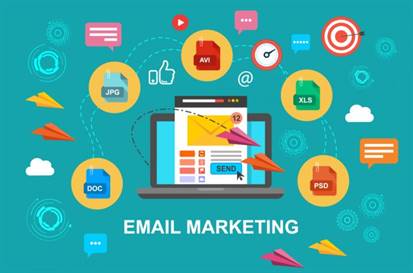
E-mail Marketing
What is email marketing, and where did it begin?
The first email, sent by Ray Tomlinson in 1971 or 1978 depending on your source, marked the beginning of the modern communication era. The message was nothing special, a series of numbers and letters that looked more like a password than a message, but its significance was profound.
The email was sent from one computer to another, traveling through a network of machines not unlike the internet we know today. Tomlinson also introduced the “@” symbol in email addresses to the world.
Gary Thuerk, a Marketing Manager at Digital Equipment Corp, sent the first commercial email years later, where the message reached a list of email addresses. And voila, email marketing was born. There were only a few hundred people on the list, but that was enough for Thuerk to claim the mantle, “Father of Spam.”
Today, we’re inundated with email marketing, and yes, some of it still feels spammy, but there’s no denying the impact a well-crafted message can have on your customers—not to mention CRM and lead nurturing.
Email marketing helps you connect with your audience to promote your brand and increase sales. You can do a lot of things with emails, like sell products, share some news, or tell a story.
Does email marketing work?
When you want to communicate something about your brand or sell your stuff, email marketing is one of the most cost-effective ways to do so.
In fact, a 2015 study by the DMA found that for every $1 spent, email has an average $38 return on investment (ROI). When shoppers are ready to buy something, they often look for emails from their favorite stores.
Still, people receive more and more email all the time, and it can be challenging to stand out in full inboxes. That’s why Mailchimp gives you the tools you need to shine (plus, we’ve got a lot of tried and true tips on sending outstanding emails).
How do I get an email list?
You’ll see the highest ROI when you build and maintain an engaged subscriber list, made up of people who want to receive your messages (and who opted in on purpose). Although building a clean list can take more work at the outset of your email marketing strategy, Mailchimp lists have built-in tools to help you along the way.
There are lots of ways to find people who’ll look forward to getting your emails, but we’ve rounded up a few that work best.
To create an email list:
- Create a signup form on your website.When people come to your website for the first time and like what they see, they’ll want a way to stay in-the-know about your brand. Create a form for newsletter signups and install a pop-up for first time visitors.
- Use a good old-fashioned signup sheet.Whether it’s at your brick and mortar store, or an event that you’re hosting or attending, when you’re surrounded by people who are into what you do, provide a place for them to sign up and learn more.
- Drive signups through social media.If you don’t have a substantial email list (or you’d just like to see it grow), but you’ve got an engaged social media following, tap into that resource. Share your signup form on your social channels.
To add more subscribers to an existing list:
- Host a contest or offer a discount.We’re big fans of giving people an incentive to sign up for your email list—and we know that contests work. Try offering a prize for some lucky new subscriber or a discount code for a first purchase.
- Make your emails easy to share.When you create beautiful, compelling emails, people will want to share them. Mailchimp gives you features (like share buttons and social media post builders) that let the word about your emails spread quickly.
Can I buy an email list?
No. You should not buy an email list.
Purchased lists are ineffective. If you send emails to a list of people whose contact info you bought, many of the emails will get identified as spam. Some spam filters will flag a campaign if anyone with the same IP has sent spam in the past.
That’s why we work vigilantly to keep our sending reputation intact, and it’s important that all users abide by our Terms of Use, which enforce anti-spam laws. There are 3 primary rules you should follow to comply with our Terms of Use.
Don’t use third-party lists.This includes purchased or rented lists, and lists scraped from third-party sources, including public websites.
Get permission.Everyone on your list should have opted in to receive emails from you, and their permission should be express and verifiable. If you use one of our signup form options, we track this permission for you.
- Include an unsubscribe link.Federal anti-spam laws require you to give people a way to unsubscribe from your list in every campaign you send. We require you to use our unsubscribe link.
I’m ready for email marketing, but which platform should I use?
Whether you’re starting your first email campaign or you’re a seasoned email pro, 360teem IT Solution has the tools and support you need. With a wide array of features that do everything from automating to tracking to optimizing your emails, we’ve got you covered from start to finish.
